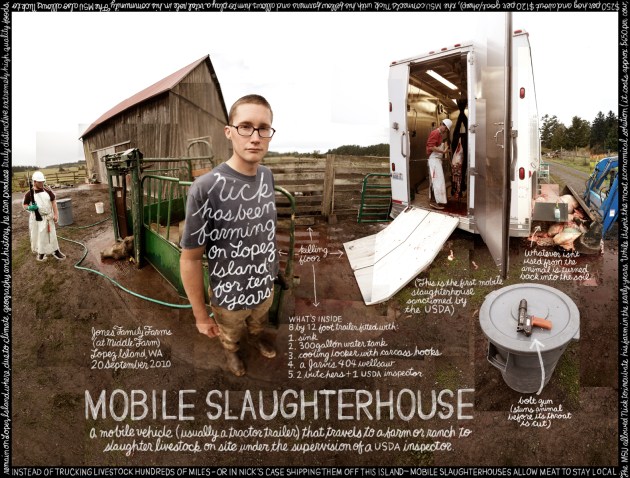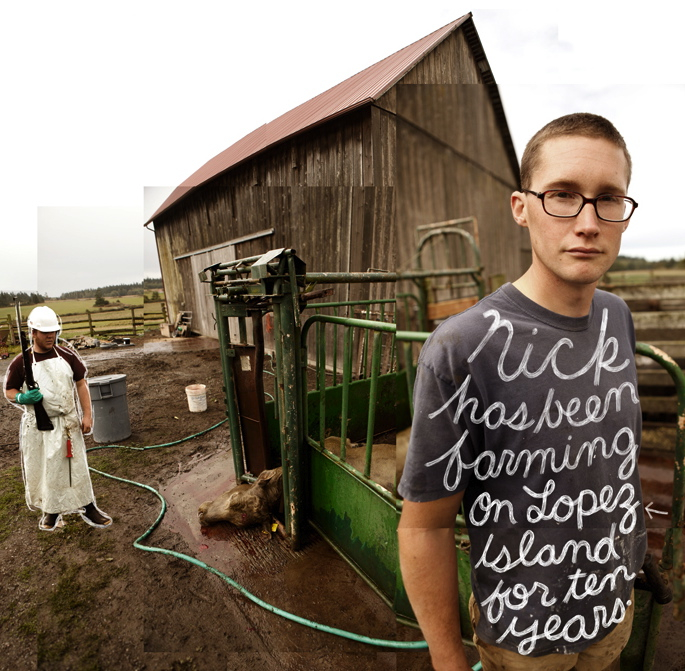Editor’s note: This is your weekly installment of images from Douglas Gayeton and Laura Howard-Gayeton’s Lexicon of Sustainability. We’ll be running one image every Friday this winter, so stay tuned. If you have your own sustainability terms, you can add them yourself to the Lexicon of Sustainability.

Click for larger version.
Jones Family Farms (at Middle Farm)
Lopez Island, Wash.
The consolidation of the meat industry has resulted in fewer local slaughterhouses, forcing many small producers to truck their animals hundreds of miles.
Can meat be local?
Yes. One solution is to make slaughterhouses mobile and bring them directly to where the animals are. The first mobile slaughterhouse sanctioned by the USDA can be found on Lopez Island, one of Washington State’s San Juan Islands. This tractor trailer travels to farms and ranches on this chain of islands, allowing butchers to slaughter livestock on-site under the supervision of USDA inspectors. It’s a model now being duplicated across the country.
What’s inside the truck?
An 8 x 12 foot trailer fitted with:
1. A sink
2. A 300-gallon water tank
3. A cooling locker with carcass hooks
4. A Jarvis 404 wellsaw
5. Two butchers + one USDA inspector
The mobile slaughter unit (MSU) allowed Nick Jones of Jones Family Farms to incubate his farm in its early years. While it isn’t the most economic solution (it costs approximately $650 per cow, $250 per hog, and about $120 per goat/sheep), the MSU connects Nick with his fellow farmers and allows him to participate in safeguarding his local food shed. The MSU also allows Nick to remain on Lopez Island, where, due to climate, geography, and history, he can produce truly distinctive and extremely high-quality foods.



